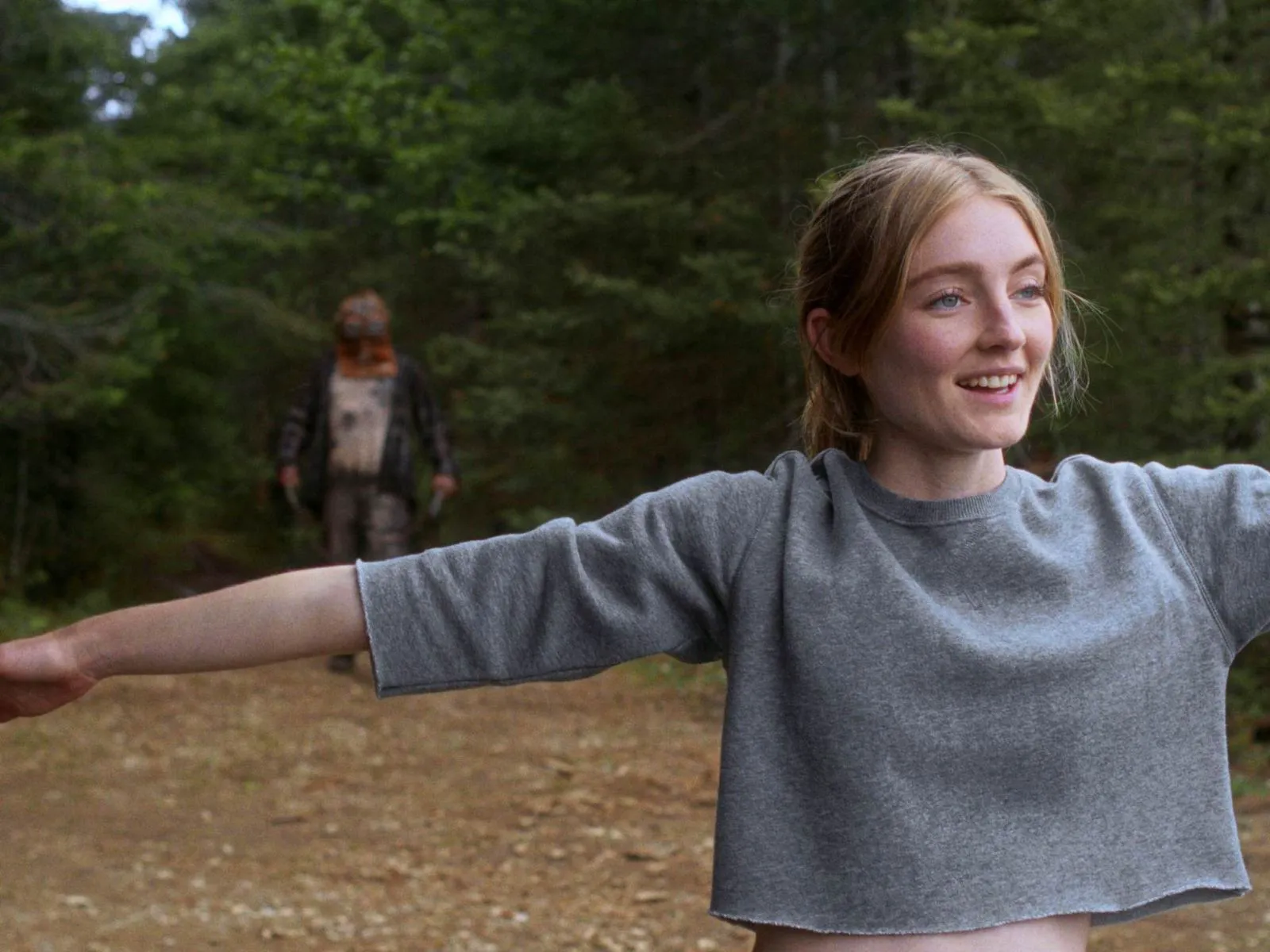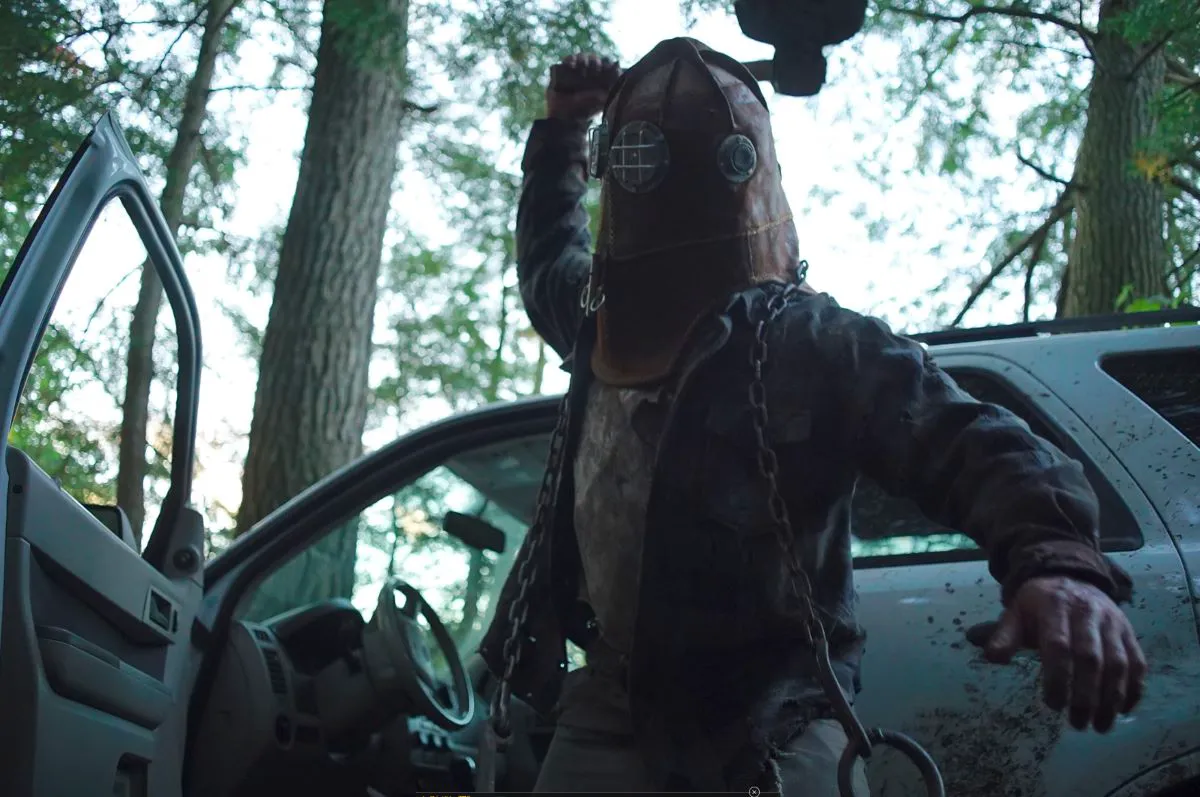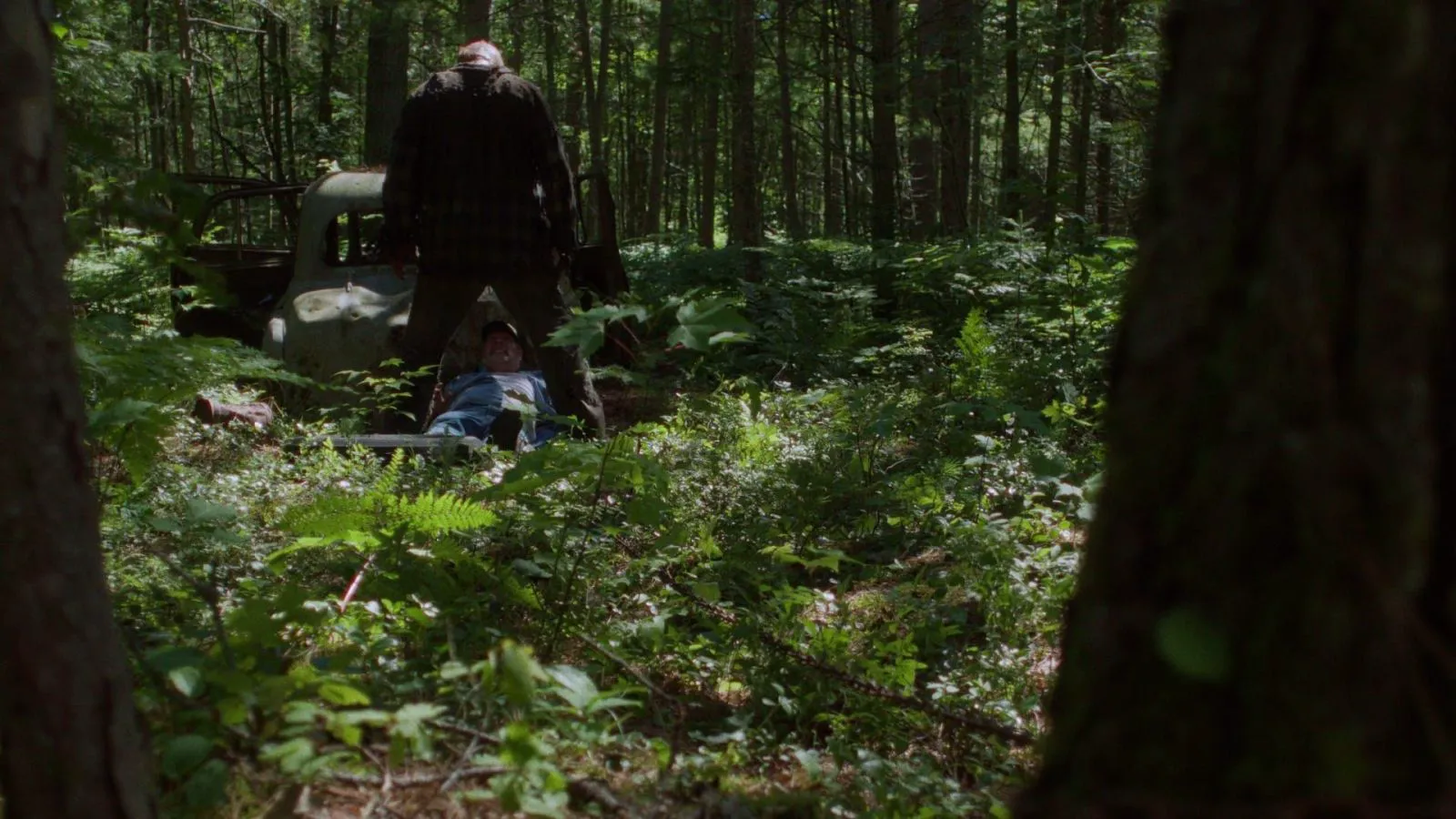The Horror Genre Breathes Again: A Look at “In a Violent Nature”
Horror fans, hold your breath! 2024 is shaping up to be a killer year for the genre. With Oz Perkins’ “Longlegs,” Scott Beck’s “Heretic,” Robert Eggers’ “Nosferatu,” and Ti West’s “MaXXXine” on the horizon, the cinematic screams are just beginning. Kicking off the bloodbath is Chris Nash’s debut, “In a Violent Nature.” While some might try to coin a new subgenre for it – perhaps “slow-slasher” or “gore-burner” – let’s leave the taxonomy to future film scholars. The real question is: does this film truly deconstruct the horror genre, or does it simply and skillfully borrow from its predecessors? Spoiler alert: it leans towards the latter, though we might wish otherwise.

Charlotte Creaghan as Aurora in “In a Violent Nature”
A Familiar Setup, A Different Pace
In classic cinematic tradition, cursed gold usually stirs up restless pirate spirits. This time, however, the gleam of a coveted medallion (practically a Horcrux) awakens an immortal evil lurking in the woods, embodied by a hulking figure. Young people arrive at a cabin by the lake, stumble upon a trinket with a dark history, and, naturally, a massacre ensues. Fallen leaves, rusty traps, sharp axes, and bloodcurdling screams – the classic slasher bingo card gets a new twist. Instead of pulsating dynamics and energetic action, viewers are plunged into a slow-motion nightmare – shamelessly bloody and disturbingly methodical.

Scene from “In a Violent Nature”
Fate vs. Rules: A Slasher Meditation
Slashers, unlike their horror brethren, rarely treat fate as a mystical force. Instead, inevitability has mutated into a set of rules (repeatedly stated). The order of the game is clear, and destiny has little to do with it. A notable exception is the “Final Destination” series, but even there, prophecies operate literally, and death becomes just another killer with an effective weapon. In the methodical and almost hypnotic structure of “In a Violent Nature,” there’s ample time between the gruesome set pieces to contemplate, even meditate. This makes the imposing figure of the immortal maniac with a disfigured face beneath a mask evoke a sense of doom and the horror of predestination. What will be, will be, and the maniac with supernatural endurance will kill everyone except the final girl (Andrea Pavlovic), no matter what.

Scene from “In a Violent Nature”
Aesthetic Over Empathy?
The attempt to transcend the earthly instinct of self-preservation, on the one hand, transforms genre violence into a carefully crafted, nostalgic pastoral scene, reminiscent of summer vacations at grandma’s house and old VHS tapes. On the other hand, it completely detaches us from the characters, both human and monster. What unfolds on screen is a well-oiled machine, where the cogs could easily be replaced – much like the way Drew Goddard pieces together the plot in “The Cabin in the Woods.” However, empathy, one of horror’s most crucial levers, is not engaged at all. Even the numerous sequels to “Friday the 13th” did a better job of eliciting sympathy for the perennial headliner of the bloody concerts at Crystal Lake – Jason. The role of the maniac in the dramaturgy and the fate of the killer were truly rethought in the pseudo-documentary “Behind the Mask: The Rise of Leslie Vernon.” Starting the tale of a psychopath as a self-deprecating parody of both slashers and found footage films, director Scott Glosserman delivered a simple yet Greek tragedy-worthy idea: a villain is needed for the birth of a heroine, who will “sacrifice himself” in the finale (and, if lucky, return). “In a Violent Nature,” however, does not question the structure of genre canons, but merely shows the cyclical nature of nightmare.
Revolution or Refinement?
So, where does the film’s claimed revolutionary nature lie, if not in shifting the perspective from victim to killer? The slasher marries the slow-burn, giving birth to a new form, but the visually confident hybrid of genres falters in the inventiveness of its content. The same ingredients in David Robert Mitchell’s arsenal once gave pop culture “It Follows” – a film that truly turned the horror world upside down. “In a Violent Nature,” however, can be called a poetic and contemplative film, which in itself is already quite a feat. Chris Nash undoubtedly admires the well-known stencils of slasher universes and celebrates them, drawing the viewer deeper and deeper to the bottom. But after watching, one is left with the feeling that the aesthetics elevated to the absolute both enriches and impoverishes the picture.